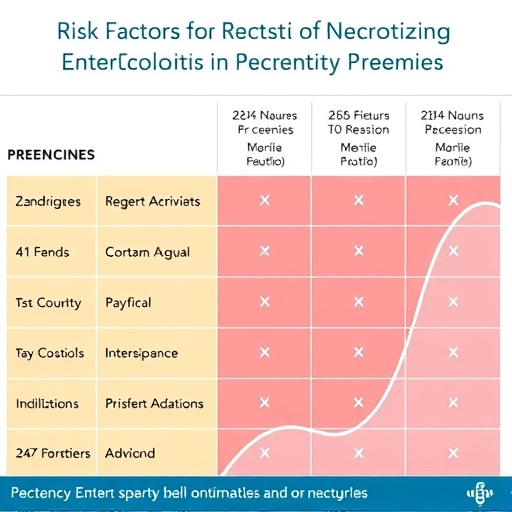
In the realm of pediatric medicine, addressing complications arising from surgical procedures remains a significant challenge. The recent focus on predicting acute lung injury (ALI) and acute respiratory distress syndrome (ARDS) following cardiopulmonary bypass (CPB) in infants has piqued the interest of clinicians and researchers alike. This interest is backed by groundbreaking research conducted by Matsui, Oka, and Shikata, published in the Journal of Artificial Organs, which provides new insights into how monitoring femoral oxygen saturation might serve as a crucial predictor for these debilitating conditions.
Cardiopulmonary bypass is a life-saving procedure that temporarily takes over the function of the heart and lungs during surgeries, particularly in infants with congenital heart defects. Despite its benefits, CPB can trigger inflammatory responses that may lead to complications such as ALI and ARDS. These conditions severely complicate recovery and can lead to substantial morbidity and mortality if not addressed promptly. The research explored the underlying mechanisms that predispose infants to these conditions, delving into how these mechanisms might be monitored to avert potential crises.
At the crux of this research is the measurement of femoral oxygen saturation, a relatively simple yet powerful indicator of systemic oxygenation. The authors argue that by continuously monitoring this parameter, healthcare providers can gather crucial data that may predict the onset of ALI and ARDS before clinical symptoms become apparent. This approach contrasts sharply with traditional methods, which often rely on delayed responses in clinical assessments. By placing emphasis on proactive monitoring, the study suggests that there may be a potential shift in how clinicians approach postoperative care in this vulnerable population.
The research design involved a cohort of infants undergoing CPB, during which femoral oxygen saturation levels were meticulously recorded. The findings indicated that variations in these saturation levels directly correlated with the incidence of ALI and ARDS. This connection raises important questions about the pathophysiological processes at play; specifically, how do fluctuations in femoral oxygen saturation reflect the status of pulmonary function in these infants? Understanding the mechanisms that drive this relationship could lead to the development of more effective preventative strategies.
Additionally, the authors examined the inflammatory markers released during the CPB process, correlating these with changes in oxygen saturation. Elevated levels of pro-inflammatory cytokines are known to contribute to lung injury mechanisms; therefore, any predictive capability gained through monitoring should also consider these biological indicators. The research outlines the potential of developing a comprehensive scoring system that integrates both femoral oxygen saturation and inflammatory markers, enabling clinicians to make data-driven decisions regarding the management of infants at high risk for these postoperative complications.
Advancements in technology and monitoring devices facilitate the real-time assessment of femoral oxygen saturation, making this approach not only feasible but also attractive for neonatal intensive care units. The integration of these technologies into routine practice represents a paradigm shift in postoperative care. If implemented effectively, such an initiative could enhance patient outcomes and pave the way for personalized medical interventions targeting at-risk populations.
The authors also acknowledge the limitations of their study, including the relatively small sample size and the variability in clinical practice across different surgical centers. Future studies with larger cohorts and multicenter collaborations are warranted to validate these initial findings. Control of confounding variables and standardization of monitoring practices will be crucial in ensuring the observed correlations hold true across diverse clinical settings.
One inherent challenge in pediatric intensive care is the physiological differences between infants and older children or adults. The smaller anatomical and functional size of infant lungs presents unique difficulties in the assessment of respiratory function. Thus, efforts to refine monitoring techniques and predictive algorithms specifically tailored for infants are of paramount importance. Furthermore, the ethical considerations of monitoring protocols—especially in neonates—must be carefully navigated to ensure that benefits outweigh risks.
As the medical community aggregates evidence surrounding the prediction of ALI and ARDS, it becomes clear that prospective interventions stand to reduce their incidence significantly. The study by Matsui and colleagues offers a beacon of hope, showcasing how a seemingly straightforward intervention can be harnessed to monitor and improve clinical outcomes. As research in this area expands, it will undoubtedly catalyze further innovation and refined practices in the field of pediatric cardiothoracic surgery.
In conclusion, the potential to predict acute lung injury and respiratory distress in infants following cardiopulmonary bypass through femoral oxygen saturation monitoring heralds a new chapter in patient management. Continued exploration and validation of these findings could revolutionize how clinicians approach postoperative monitoring, moving from reactive to proactive care strategies. The implications of this study resonate not only within the confines of individual surgeries but extend to larger discussions regarding advancements in pediatric healthcare and the quest for improved surgical outcomes.
In synthesis, the work by Matsui, Oka, and Shikata represents an essential contribution to the literature on pediatric surgery and postoperative care. Their findings compel the necessity for further research and clinical trials aimed at affirming these results and translating them into standard practice. As the medical community grapples with the challenges posed by surgical complications, such research acts as a cornerstone in the ongoing effort to enhance patient safety and care quality for our most vulnerable populations.
Subject of Research: Acute lung injury/acute respiratory distress syndrome prediction in infants after cardiopulmonary bypass.
Article Title: Prediction of acute lung injury/acute respiratory distress syndrome after cardiopulmonary bypass in infants by monitoring femoral oxygen saturation.
Article References:
Matsui, K., Oka, N., Shikata, F. et al. Prediction of acute lung injury/acute respiratory distress syndrome after cardiopulmonary bypass in infants by monitoring femoral oxygen saturation. J Artif Organs (2025). https://doi.org/10.1007/s10047-025-01524-9
Image Credits: AI Generated
DOI: 10.1007/s10047-025-01524-9
Keywords: Acute lung injury, acute respiratory distress syndrome, cardiopulmonary bypass, femoral oxygen saturation, infant health, pediatric surgery, postoperative care.
Tags: acute lung injury in infantsAcute respiratory distress syndromecardiopulmonary bypass complicationscongenital heart defect surgery risksfemoral oxygen saturation monitoringinflammatory responses in surgeryJournal of Artificial Organs research findingspediatric lung injury predictionpostoperative care in pediatricsresearch on lung injury predictionrespiratory complications in infantssystemic oxygenation measurement




